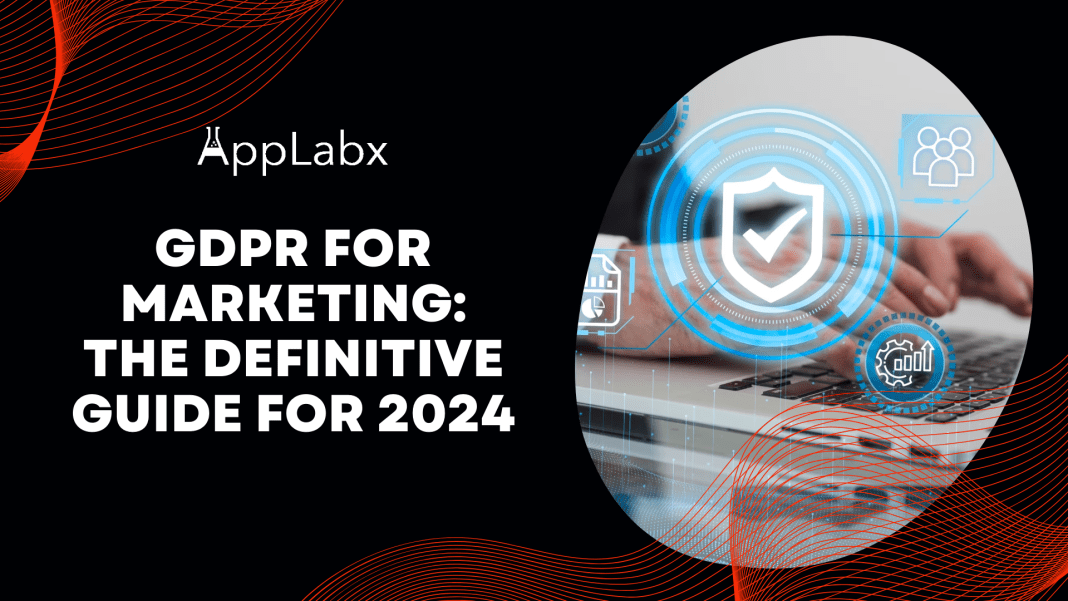Key Takeaways
- Strategic Adaptation to Evolving Regulations: Discover how to navigate the dynamic 2024 regulatory landscape, staying ahead of GDPR amendments and updates to ensure continuous compliance in your marketing strategies.
- Tools Empowering Compliance and Efficiency: Explore a suite of advanced tools and resources tailored for marketers, streamlining data mapping, consent management, and incident response to fortify your GDPR compliance infrastructure.
- Balancing Personalization and Privacy for Success: Uncover the art of striking the right balance between personalized marketing and stringent data protection. Learn actionable strategies to build consumer trust, transparency, and ethical data practices in your campaigns.
In the ever-evolving landscape of digital marketing, staying ahead of the curve is not just a choice; it’s a necessity.
As we step into 2024, the significance of aligning marketing strategies with stringent data protection regulations has reached a pinnacle.
Amidst the myriad of compliance frameworks, one stands as a cornerstone for safeguarding individuals’ privacy rights – the General Data Protection Regulation (GDPR).
This comprehensive guide serves as your compass through the intricacies of GDPR for Marketing, providing an extensive roadmap tailored to the nuances of 2024.
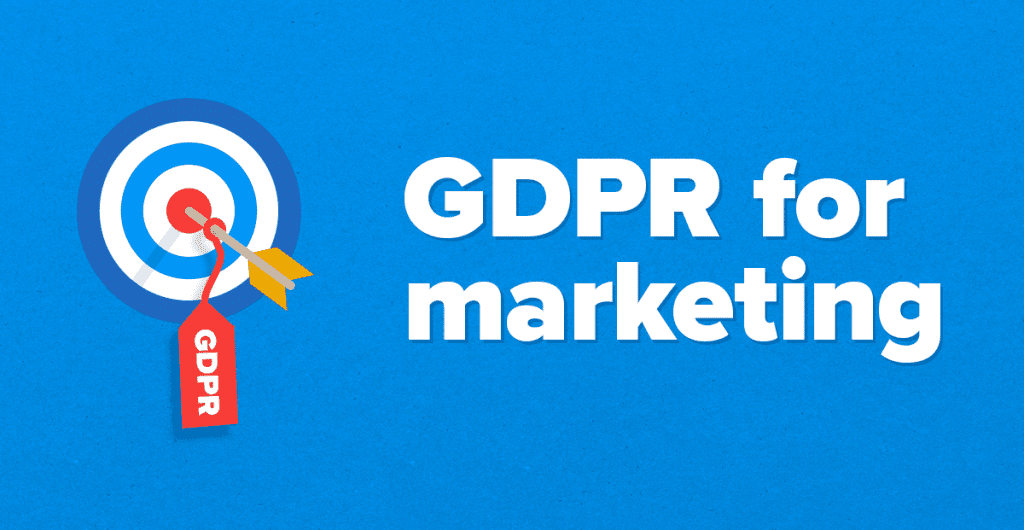
Navigating the GDPR Maze: A Marketer’s Imperative
The General Data Protection Regulation, born out of the need to empower individuals and instill accountability in the handling of their personal data, has metamorphosed into a linchpin for marketers worldwide.
As we delve into the heart of 2024, the dynamic nature of GDPR necessitates an in-depth understanding that goes beyond the basics.
This definitive guide transcends the commonplace, offering marketers a comprehensive and up-to-the-minute resource for navigating the complex intersection of data-driven marketing and regulatory compliance.
The Essence of GDPR: Beyond Acronyms and Regulations
Before we embark on this journey, let’s unravel the essence of GDPR. It’s not just a legal acronym thrown around; it’s a paradigm shift in the digital marketing ethos.
GDPR encapsulates the principles of fairness, transparency, and accountability, ushering in an era where consumers are not just targets but individuals with rights.
In this guide, we’ll dissect these principles and explore how they intertwine with your marketing strategies, ensuring not just compliance but a harmonious coexistence between personalized marketing and data protection.
Evolution in Every Paragraph: Unveiling the 2024 Landscape
The digital realm is a dynamic ecosystem, with regulations evolving in tandem with technological advancements. In this guide, we transcend the static nature of information, providing insights into the latest updates and modifications to the GDPR landscape in 2024.
From the latest amendments to nuanced interpretations, every paragraph unfolds the evolving tapestry of compliance, ensuring that as a marketer, you are not just informed but strategically adaptable.

Why 2024 Demands a Definitive Guide: Unraveling the Complexity
As the marketing landscape becomes increasingly intricate, the challenges of GDPR compliance multiply.
Consent mechanisms, profiling intricacies, and the delicate balance between personalization and privacy demand a nuanced approach.
This guide is not just a roadmap; it’s a toolkit crafted to equip you with the knowledge and strategies needed to tackle the multifaceted challenges of data protection in the marketing realm.
Your Definitive Companion: What to Expect
In the ensuing sections, we’ll dissect GDPR’s impact on marketing with surgical precision.
From understanding the core principles to unraveling the complexities of data subjects’ rights, this guide leaves no stone unturned.
Embark on the Journey: Your Role in GDPR-Compliant Marketing
As we embark on this journey through the GDPR labyrinth, remember that compliance is not just a legal obligation; it’s a commitment to ethical, consumer-centric marketing.
Join us in this exploration of GDPR for Marketing – the definitive guide for 2024. It’s not just information; it’s your compass in the ever-shifting landscape of digital marketing compliance.
Buckle up, and let’s navigate the intricacies together.
But, before we venture further, we like to share who we are and what we do.
About AppLabx
From developing a solid marketing plan to creating compelling content, optimizing for search engines, leveraging social media, and utilizing paid advertising, AppLabx offers a comprehensive suite of digital marketing services designed to drive growth and profitability for your business.
AppLabx is well known for helping companies and startups use digital marketing to drive web traffic to their websites and web apps.
At AppLabx, we understand that no two businesses are alike. That’s why we take a personalized approach to every project, working closely with our clients to understand their unique needs and goals, and developing customized strategies to help them achieve success.
If you need a digital consultation, then send in an inquiry here.
GDPR for Marketing: The Definitive Guide for 2024
- Understanding GDPR Basics
- GDPR and Marketing
- Compliance Strategies
- GDPR Challenges in 2024
- Tools and Resources
1. Understanding GDPR Basics
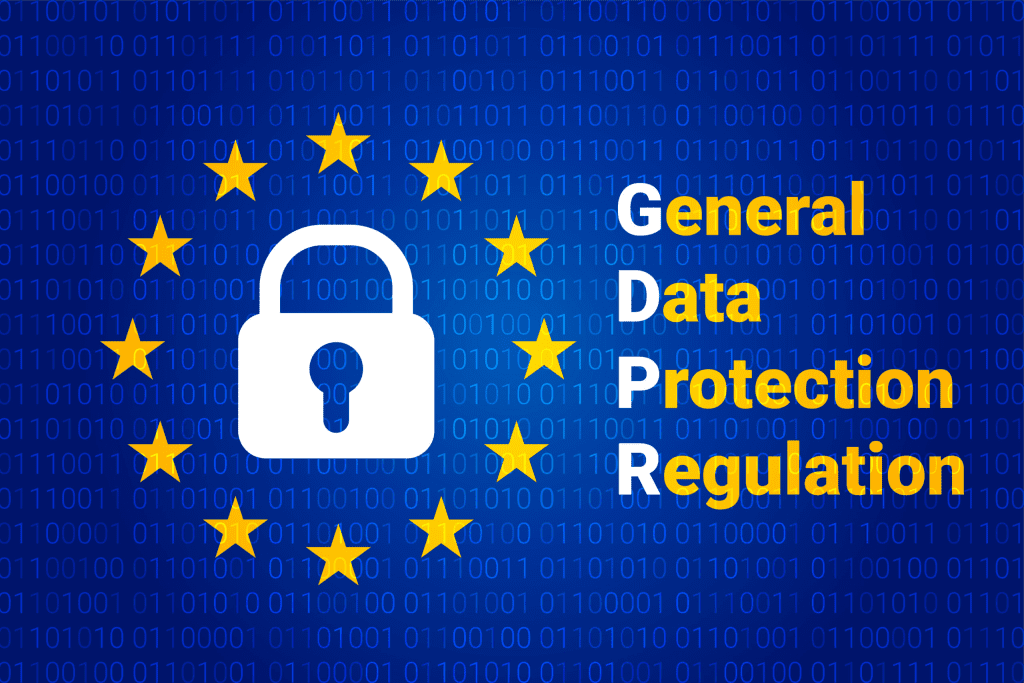
Key Principles of GDPR
Lawfulness, Fairness, and Transparency
Lawfulness: GDPR mandates that the processing of personal data must have a legal basis.
This could be the consent of the data subject, the necessity of processing for the performance of a contract, compliance with a legal obligation, protection of vital interests, the performance of a task carried out in the public interest or in the exercise of official authority, and legitimate interests pursued by the data controller or a third party.
Example: If a marketing campaign relies on obtaining user consent for data processing, it must be explicitly stated and acquired in clear, understandable language.
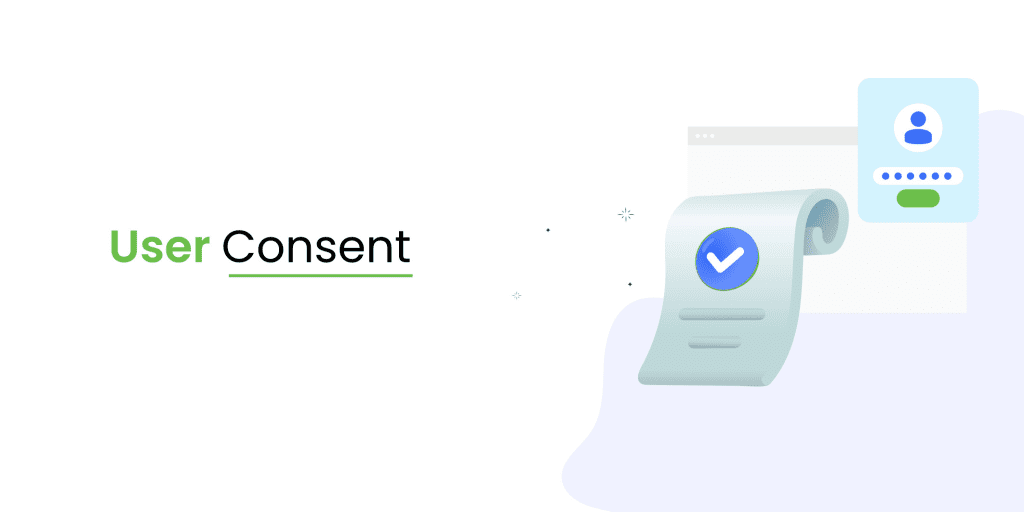
Fairness and Transparency: Individuals have the right to know how their data is being used. Transparency requires clear and concise communication about data processing activities.
Example: A website’s privacy policy should provide a transparent explanation of how user data is collected, and processed, and for what purposes.
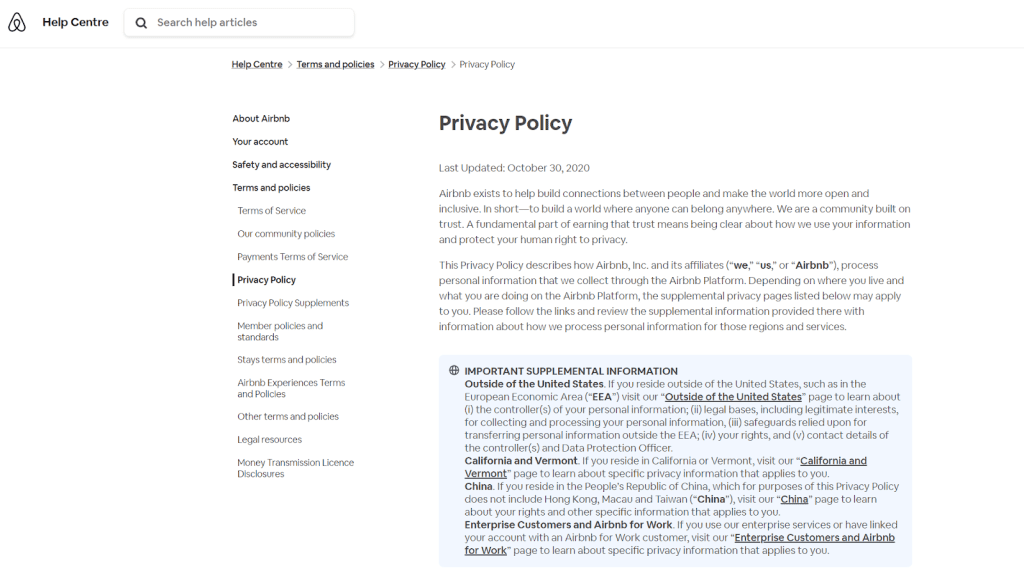
Purpose Limitation
Defining Purposes: Data collected should be for specified, explicit, and legitimate purposes. Any additional processing beyond the original purpose requires further consent.
Example: If a customer provides their email address for a newsletter subscription, using that address for unrelated marketing purposes would violate the principle of purpose limitation.

Data Minimization
Collecting Minimum Data: Organizations should only collect data that is necessary for the intended purpose. Avoid collecting excessive or irrelevant information.
Example: A mobile app seeking permission to access a user’s location for delivery tracking should not request access to unrelated information, such as contacts or photos.
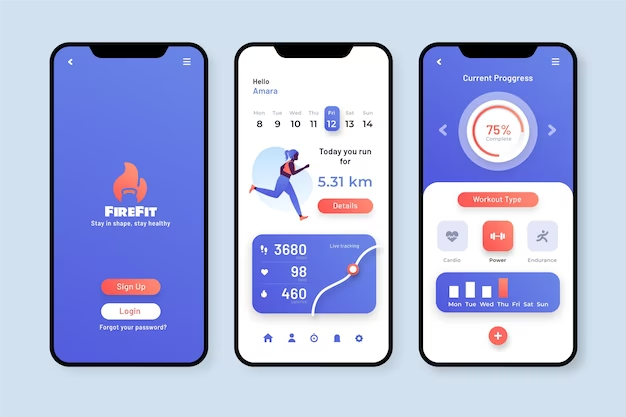
Accuracy
Ensuring Accuracy: Organizations must take reasonable steps to ensure that personal data is accurate and kept up-to-date.
Example: If a customer updates their address, the organization must promptly reflect this change in their records.
Storage Limitation
Limited Retention Period: Personal data should only be kept for as long as necessary for the intended purpose. Once the purpose is fulfilled, data should be securely deleted.
Example: If a customer closes their account with an online service, the platform should not retain unnecessary personal data beyond the account closure.
Integrity and Confidentiality
Security Measures: GDPR emphasizes the need for robust security measures to protect personal data from unauthorized access, disclosure, alteration, and destruction.
Example: Encryption of sensitive data, secure access controls, and regular security audits are essential measures to ensure integrity and confidentiality.
Accountability and Transparency
Demonstrating Compliance: Organizations are responsible for and must be able to demonstrate compliance with GDPR principles. This involves implementing appropriate policies, procedures, and documentation.
Example: Maintaining comprehensive records of data processing activities, conducting regular privacy impact assessments, and appointing a Data Protection Officer (DPO) are ways to showcase accountability.
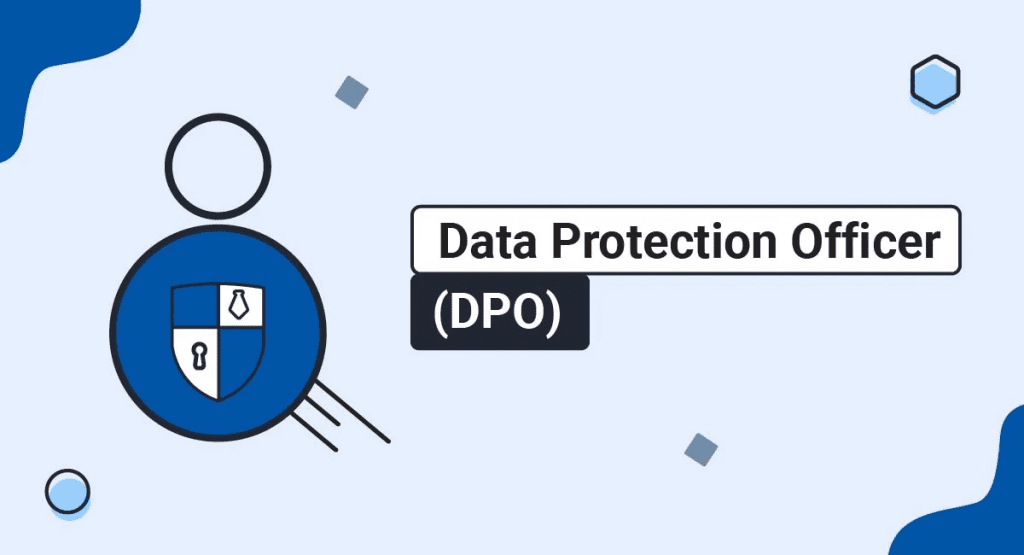
Data Subjects’ Rights
Right to be Informed
Providing Information: Data subjects have the right to know how their data is being processed. Organizations must provide clear, concise, and easily accessible information.
Example: An online retailer should inform customers about the purposes of data processing, the identity of the data controller, and contact information for the Data Protection Officer (DPO).
Right of Access
Access to Personal Data: Individuals can request access to their personal data held by an organization.
The organization must provide a copy of the information free of charge.
Example: A customer may request access to their purchase history and account details from an e-commerce platform.
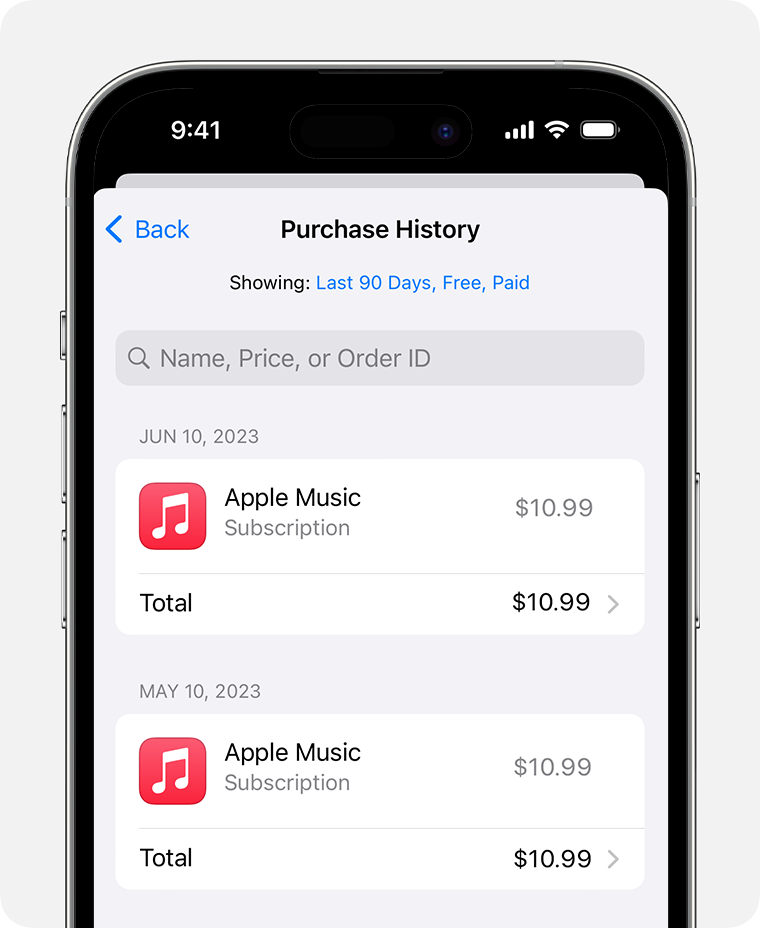
Right to Rectification
Correcting Inaccuracies: If personal data is inaccurate or incomplete, individuals have the right to have it rectified.
Example: If a customer’s address in a loyalty program account is incorrect, the organization must promptly update the information upon request.
Right to Erasure
The Right to be Forgotten: Individuals can request the deletion of their personal data under certain circumstances, such as when the data is no longer necessary for the purpose for which it was collected.
Example: A user may request the deletion of their account and associated data from a social media platform.
Right to Restrict Processing
Limiting Processing Activities: Data subjects can request the restriction of processing their personal data in certain situations.
Example: If a customer disputes the accuracy of their data, they may request the organization to limit processing until the accuracy is verified.
Right to Data Portability
Transferring Data: Individuals can request their personal data in a structured, commonly used, and machine-readable format for transfer to another data controller.
Example: A user switching from one cloud service to another may request their data in a format that allows for seamless transfer.
Right to Object
Objecting to Processing: Individuals have the right to object to the processing of their personal data for certain purposes, including direct marketing.
Example: If a customer no longer wishes to receive marketing communications, they can object, and the organization must cease such processing.
Data Controllers and Processors
Defining Roles: GDPR distinguishes between data controllers (those who determine the purposes and means of processing) and data processors (those who process data on behalf of the controller).
Example: An e-commerce platform (controller) may use a third-party payment processor (processor) to handle payment transactions. Both entities have specific responsibilities under GDPR.
2. GDPR and Marketing
As the marketing landscape becomes increasingly data-driven, the symbiotic relationship between marketing strategies and data protection regulations, notably the General Data Protection Regulation (GDPR), has come to the forefront.
In this section, we’ll dissect the implications of GDPR on marketing practices, exploring key facets and providing actionable insights for marketers to ensure compliance while maintaining effective and personalized campaigns.
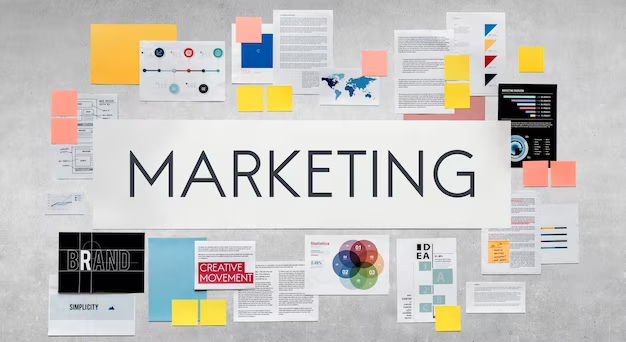
Consent in Marketing: Navigating the Legal Landscape
Obtaining and Managing Consent
Clear and Unambiguous Consent: GDPR mandates that consent for data processing must be explicit, freely given, and easily understandable. Marketers must ensure that consent forms are unambiguous and separate from other terms and conditions.
Example: An online retailer should have a distinct checkbox for users to explicitly opt-in to receive marketing communications during the registration process.
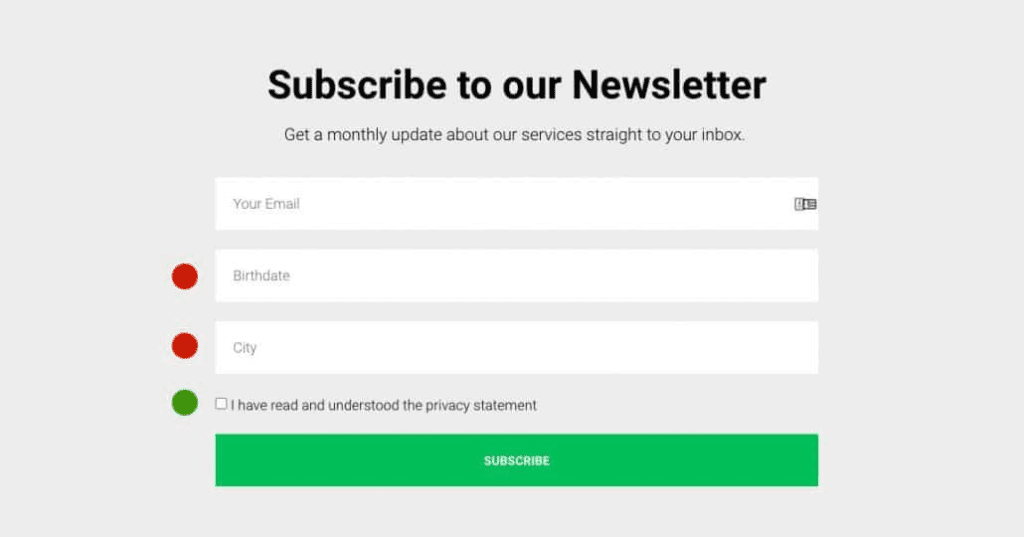
Granular Consent Options: Offering granular choices allows users to select specific types of communication they wish to receive, providing more control over their data.
Example: A subscription management page that allows users to customize their preferences for newsletters, promotional offers, and product updates.
Documenting Consent: Marketers must maintain comprehensive records of user consent, including the details of what users were informed about at the time of consent.
Example: A customer relationship management (CRM) system that logs and timestamps user consent for future reference.
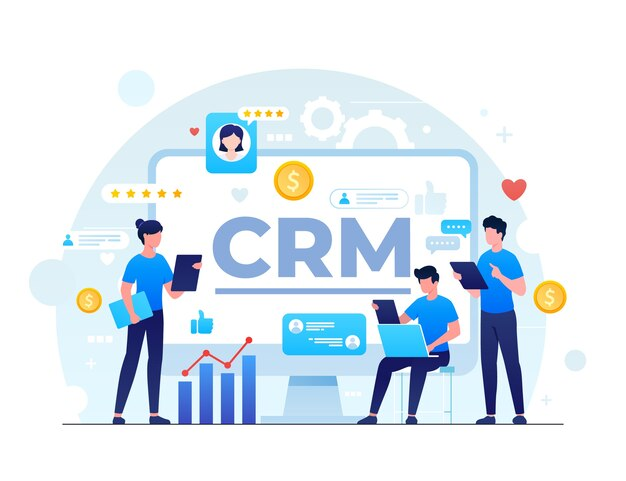
Opt-in and Opt-out Mechanisms
Unambiguous Opt-in: Marketing materials should not be sent without the explicit consent of the user. Opt-in mechanisms should be clear and distinguishable.
Example: An e-commerce site could utilize a two-step opt-in process, where users first subscribe and then confirm their subscription through a verification email.
Effortless Opt-out: Providing users with easy and accessible opt-out options ensures compliance with GDPR’s right to object.
Example: In marketing emails, including a visible and functional unsubscribe link that allows users to opt out effortlessly.
Regularly Updating Preferences: Encouraging users to regularly review and update their communication preferences ensures ongoing compliance with their consent choices.
Example: Sending periodic reminders to users to review and update their preferences through a user-friendly dashboard.
Profiling and Automated Decision-Making: Balancing Personalization and Privacy
Impact on Marketing Strategies
Understanding Profiling: GDPR introduces regulations on profiling, which involves the automated processing of personal data to evaluate certain aspects of an individual. Marketers using profiling techniques need to be transparent about their methods.
Example: An e-commerce platform using customer purchase history to suggest personalized product recommendations.
Algorithmic Transparency: GDPR encourages transparency in automated decision-making processes, urging marketers to provide clear explanations when algorithms influence significant decisions.
Example: A financial institution using automated algorithms for credit scoring should provide users with understandable insights into the factors influencing their scores.

Ensuring Transparency in Profiling
User-friendly Explanations: Marketers should provide users with easily understandable explanations of how their data is being used for profiling and automated decision-making.
Example: An online streaming service explaining to users how their viewing history influences personalized content recommendations.
Opt-out Options: Offering users the ability to opt out of profiling activities ensures that individuals have control over the use of their data for personalized marketing.
Example: An advertising platform providing users with an option to disable personalized ads based on their online behaviour.
Data Protection by Design and Default in Marketing Campaigns
Integrating Privacy into Marketing Processes
Privacy Impact Assessments (PIA): Conducting PIAs before implementing new marketing strategies helps identify and minimize data protection risks.
Example: Before launching a targeted advertising campaign, a company performs a PIA to assess the impact on user privacy and implements necessary safeguards.
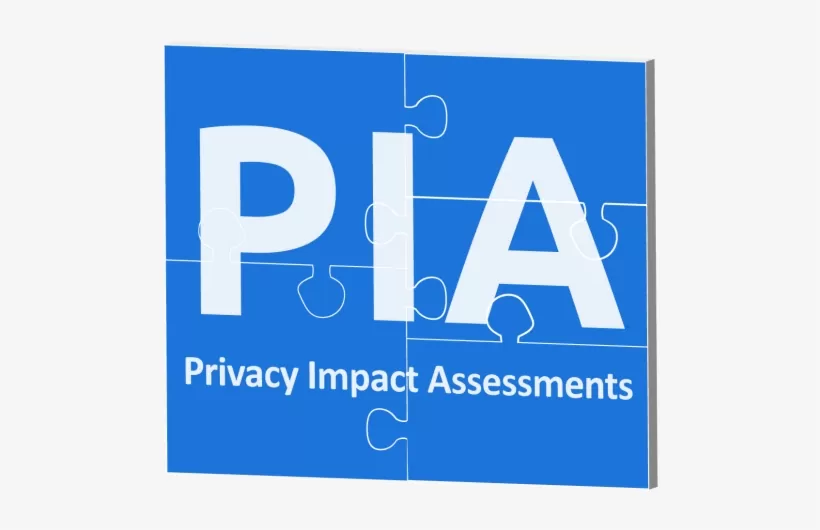
Data Minimization: Adopting a data minimization approach ensures that only necessary data is collected for marketing purposes, reducing the risk of data breaches.
Example: An event organizer collects only essential participant information for marketing purposes rather than exhaustive personal details.
Ensuring Transparent Data Practices
User Education: Educating users about data protection measures in marketing materials enhances transparency and builds trust.
Example: A mobile app providing in-app notifications to users, explaining how their data is used for personalized content recommendations.
Regular Audits and Assessments: Periodic audits of marketing processes help ensure ongoing compliance with GDPR and identify areas for improvement.
Example: A marketing team conducting quarterly assessments to review data processing practices and update privacy measures accordingly.
3. Compliance Strategies
As the General Data Protection Regulation (GDPR) continues to shape the marketing landscape, implementing robust compliance strategies becomes paramount for organizations seeking to balance effective marketing campaigns with the protection of individuals’ privacy rights.
In this section, we’ll explore actionable compliance strategies, incorporating real-world examples and data-driven insights to guide marketers in their journey toward GDPR adherence.
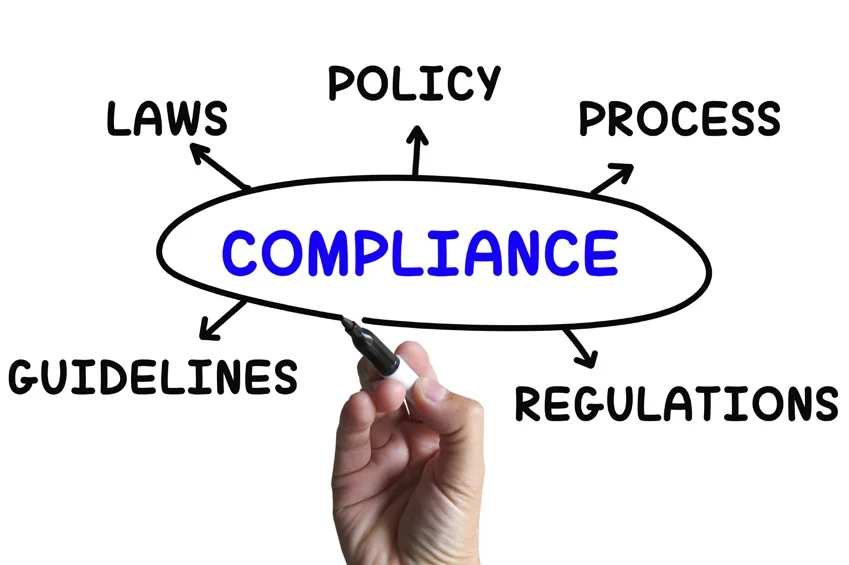
Data Mapping and Auditing: Establishing a Foundation for Compliance
Comprehensive Data Mapping
Identifying Data Touchpoints: Conduct a thorough analysis of all data touchpoints within the marketing ecosystem, including customer databases, analytics tools, and third-party platforms.
Example: An e-commerce business mapping customer data flow from website interactions, and purchase transactions, to CRM databases.
Categorizing Data Types: Classify collected data into categories (personal, sensitive, behavioural) to better understand the nature and potential risks associated with each type.
Example: A marketing agency categorizes customer data into personal information, purchase history, and engagement metrics for a holistic view of their data landscape.
Regular Data Audits
Scheduled Audits: Implement regular audits to ensure data accuracy, relevance, and compliance with GDPR principles, identifying and rectifying any discrepancies promptly.
Example: A software company conducting quarterly audits of customer data stored in their cloud-based applications.
Data Lifecycle Management: Establish protocols for the lifecycle of data, including secure storage, data retention policies, and secure deletion when data is no longer required.
Example: An online service provider defining data retention periods and automatically purging inactive user accounts and associated data after a predefined period.
Implementing Privacy by Design: Infusing Compliance into Marketing Practices
Embedding Privacy Principles
Training and Awareness Programs: Conduct regular training sessions to educate marketing teams on privacy principles, fostering a culture of compliance.
Example: A marketing agency providing regular workshops to educate staff on GDPR compliance, emphasizing the importance of data protection in marketing practices.
Cross-functional Collaboration: Foster collaboration between marketing, legal, and IT teams to ensure that data protection measures are seamlessly integrated into every aspect of marketing campaigns.
Example: An e-commerce company establishing cross-functional teams for major marketing initiatives, ensuring legal and IT input throughout the planning and execution stages.
Incorporating Consent Mechanisms
Dynamic Consent Forms: Utilize user-friendly, dynamic consent forms that allow individuals to easily understand and control how their data is processed.
Example: An online platform employing a consent management tool that dynamically adjusts consent options based on user preferences and the purpose of data processing.
Preference Centers: Develop preference centres that empower users to modify their communication preferences, providing a transparent and accessible way to manage their consent.
Example: A subscription-based service offering users a preference centre where they can easily opt in or opt out of various types of marketing communications.
Data Protection Impact Assessments (DPIA): Proactively Managing Risks
Identifying Risks and Impact
Scalable DPIA Process: Implement a scalable DPIA process to identify, assess, and mitigate risks associated with specific marketing activities, especially those involving high-risk data processing.
Example: A marketing team conducting a DPIA before launching a targeted advertising campaign that involves processing sensitive customer demographics.
External Expert Involvement: In cases of complex data processing activities, consider involving external experts or Data Protection Officers (DPOs) to ensure a comprehensive and unbiased assessment.
Example: A multinational corporation seeking external legal consultation for a DPIA related to a cross-border marketing initiative involving diverse data regulations.
Documenting DPIA Outcomes
Comprehensive Documentation: Maintain thorough documentation of DPIA processes, outcomes, and the measures taken to address identified risks, serving as evidence of compliance.
Example: An e-commerce platform storing detailed records of DPIA assessments for each marketing campaign, including risk evaluations and mitigation strategies.
Continuous Monitoring and Review: Establish a system for continuous monitoring and review of DPIA outcomes, updating processes as needed to adapt to changing data processing activities.
Example: A marketing agency conducting periodic reviews of DPIA documentation and updating processes to align with evolving marketing strategies and regulations.
Data Breach Notifications and Response Plan: Swift and Transparent Action
Establishing a Response Framework
Clear Reporting Procedures: Develop clear and efficient procedures for reporting and responding to data breaches promptly.
Example: An online retailer training staff to follow a step-by-step process for reporting and responding to potential data breaches, minimizing response time.
Cross-functional Incident Response Team: Form an incident response team comprising representatives from IT, legal, and communication departments to ensure a coordinated and swift response.
Example: A marketing agency designating specific roles within an incident response team to handle technical, legal, and public relations aspects in the event of a data breach.
Transparency in Communication
Timely Notification: Adhere to GDPR’s requirement of timely notification to both regulatory authorities and affected individuals in the event of a data breach.
Example: A financial institution promptly notifies both customers and relevant data protection authorities following the identification of a data breach involving sensitive financial information.
Customer Communication Plan: Develop a communication plan for affected customers, providing clear and transparent information about the nature of the breach, potential risks, and recommended actions.
Example: An e-commerce platform communicating with affected users through multiple channels, including email and website notifications, with clear guidance on password changes and security measures.
4. GDPR Challenges in 2024
As we step into 2024, the General Data Protection Regulation (GDPR) continues to shape the digital landscape, presenting both opportunities and challenges for businesses navigating the delicate balance between data-driven marketing and individual privacy rights.
In this section, we’ll explore the unique challenges posed by GDPR in 2024, shedding light on the evolving regulatory landscape and providing actionable insights for organizations aiming to stay ahead of compliance requirements.

Keeping Up with Evolving Regulations
Dynamic Regulatory Environment
Amendments and Updates: GDPR, like any regulatory framework, is subject to amendments and updates. Staying abreast of these changes is crucial to ensuring ongoing compliance.
Example: The European Data Protection Board (EDPB) regularly issues guidelines and interpretations to clarify GDPR provisions. Marketers must monitor and incorporate these updates into their strategies.
Cross-Border Considerations: With GDPR impacting organizations operating across borders, navigating the nuances of various national data protection laws adds complexity to compliance efforts.
Example: A multinational corporation engaging in cross-border marketing must be aware of and adhere to diverse interpretations of GDPR across European Union member states.
Navigating International Data Transfers
Data Transfer Challenges
Third-Country Transfers: Organizations transferring data to countries outside the European Economic Area (EEA) face increased scrutiny, with GDPR requiring adherence to specific safeguards.
Example: A cloud-based service provider storing customer data on servers located outside the EEA must implement mechanisms such as Standard Contractual Clauses (SCCs) to ensure compliance.
Post-Schrems II Landscape: The Schrems II ruling has profound implications for international data transfers, necessitating a reassessment of existing data transfer mechanisms.
Example: A software-as-a-service (SaaS) company reevaluating its data transfer mechanisms and potentially re-negotiating agreements with non-EEA service providers to align with Schrems II requirements.
Balancing Personalization with Privacy
Personalized Marketing Dilemma
Striking the Right Balance: The essence of GDPR compliance lies in delivering personalized marketing experiences while respecting user privacy. Achieving this delicate equilibrium remains a significant challenge.
Example: An e-commerce platform tailoring product recommendations based on user behaviour without compromising data privacy, requiring sophisticated algorithms and transparent communication.
Consent Management Complexity: Obtaining and managing user consent for personalized marketing presents challenges, especially in scenarios where granular consent preferences are necessary.
Example: A digital media platform allowing users to customize their content preferences faces the challenge of developing user-friendly consent interfaces that cater to diverse content categories.
Addressing Emerging Technologies and GDPR
Impact of AI and Machine Learning
Algorithmic Transparency Challenges: The increasing reliance on AI and machine learning in marketing introduces challenges related to explaining automated decision-making processes to users.
Example: An online streaming service using AI algorithms for content recommendations faces the challenge of providing understandable explanations for why certain content is suggested.
Profiling Risks: Advanced profiling techniques powered by AI can inadvertently result in discriminatory outcomes, raising ethical concerns and potential GDPR violations.
Example: A financial institution using AI for credit scoring must address the risk of biased outcomes and ensure fairness in algorithmic decision-making.
Challenges in Consent Mechanisms
Cookie Consent Complexity
Evolving Cookie Regulations: Changes in cookie regulations across jurisdictions add complexity to obtaining and managing cookie consent, with GDPR requiring transparent and granular consent mechanisms.
Example: A news website adapting to evolving cookie regulations by implementing a cookie banner that allows users to select preferences for different types of cookies.
User-Friendly Interfaces: Designing user-friendly interfaces for managing cookie preferences becomes crucial, ensuring that users have clear options to accept or reject specific cookie categories.
Example: An e-commerce platform providing an intuitive cookie settings page where users can easily customize their preferences and make informed choices.
Emerging Trends in GDPR Compliance
Rise of Privacy Tech Solutions
Integration of Privacy Tools: The market sees a surge in privacy tech solutions designed to assist businesses in automating and simplifying GDPR compliance processes.
Example: Implementation of a comprehensive privacy management platform that streamlines data mapping, and consent management, and ensures ongoing compliance.
Investment in Data Protection Officers (DPOs): Organizations increasingly recognize the importance of appointing DPOs to oversee and ensure compliance with GDPR regulations.
Example: A technology company appointing a DPO responsible for advising on data protection matters, monitoring compliance, and acting as a point of contact with regulatory authorities.
5. Tools and Resources
Ensuring GDPR compliance in marketing requires a strategic approach, supported by a suite of tools and resources designed to streamline processes, enhance transparency, and manage data responsibly.
In this section, we will explore a range of tools and resources available to marketers, with relevant examples and insights to facilitate a robust compliance strategy.
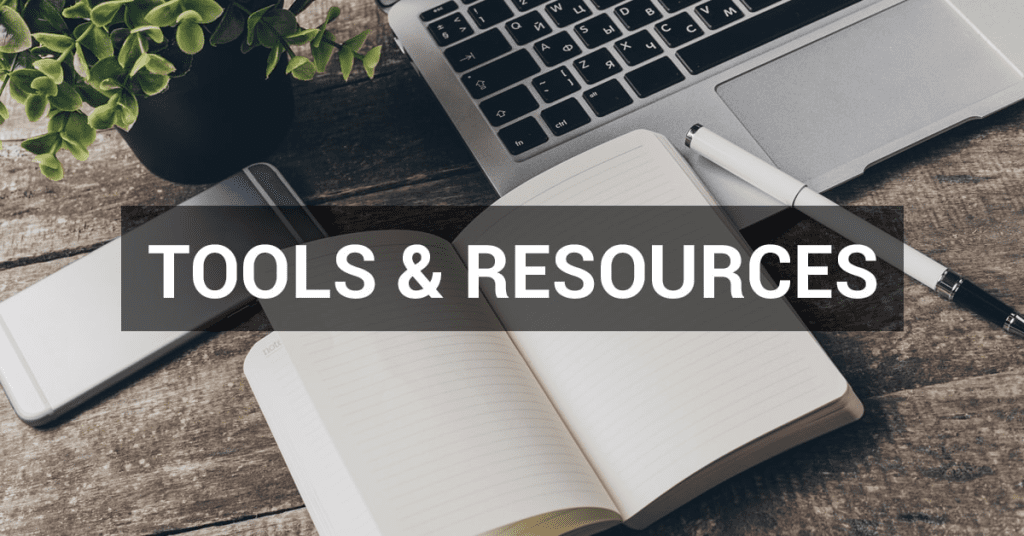
Data Mapping and Management Tools
OneTrust
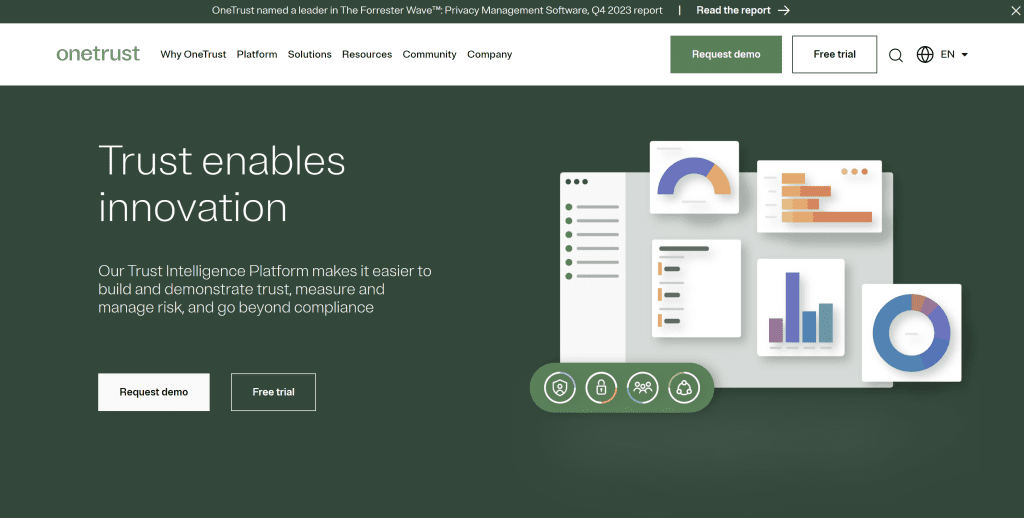
- Key Features:
- Comprehensive data mapping capabilities.
- Automated record-keeping for data processing activities.
- Integration with consent management tools.
- Benefits:
- Enables organizations to create detailed data flow diagrams.
- Facilitates ongoing compliance with GDPR documentation requirements.
- Streamlines the management of data processing records.
DataGrail
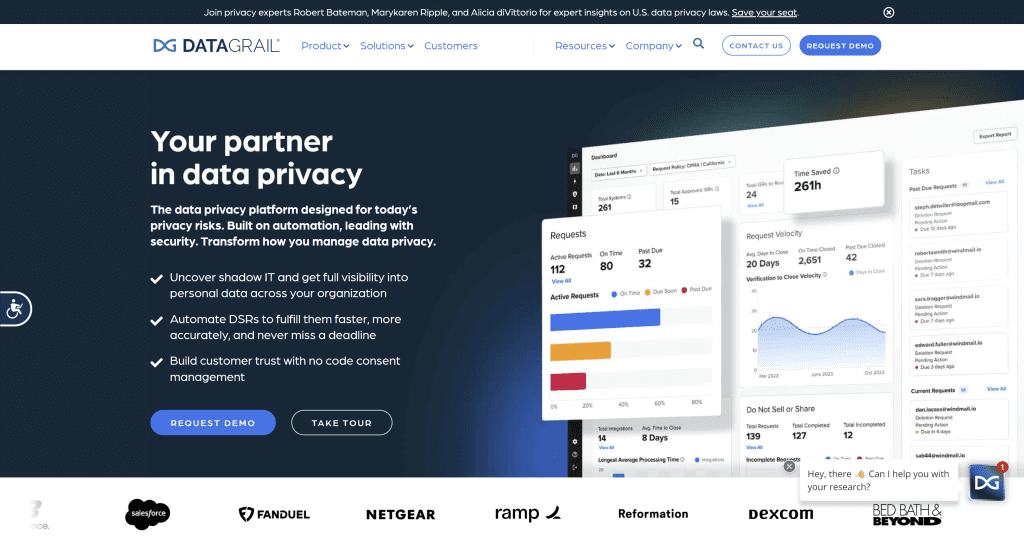
- Key Features:
- Automated data discovery and mapping.
- Consent management for various channels.
- Real-time data subject request handling.
- Benefits:
- Simplifies the process of identifying and mapping personal data.
- Provides a centralized platform for managing user consents.
- Streamlines responses to data subject requests.
Consent Management Solutions
Cookiebot
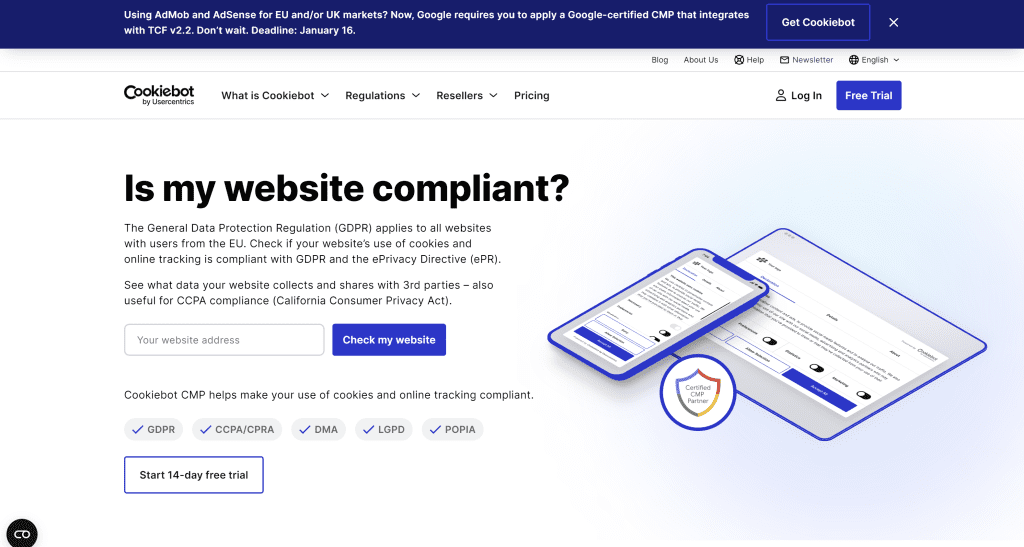
- Key Features:
- Cookie consent management and tracking.
- Customizable consent banners.
- Granular consent preferences for users.
- Benefits:
- Helps organizations comply with GDPR cookie consent requirements.
- Provides transparent and user-friendly interfaces for managing cookie preferences.
- Offers automated scanning for tracking technologies.
TrustArc
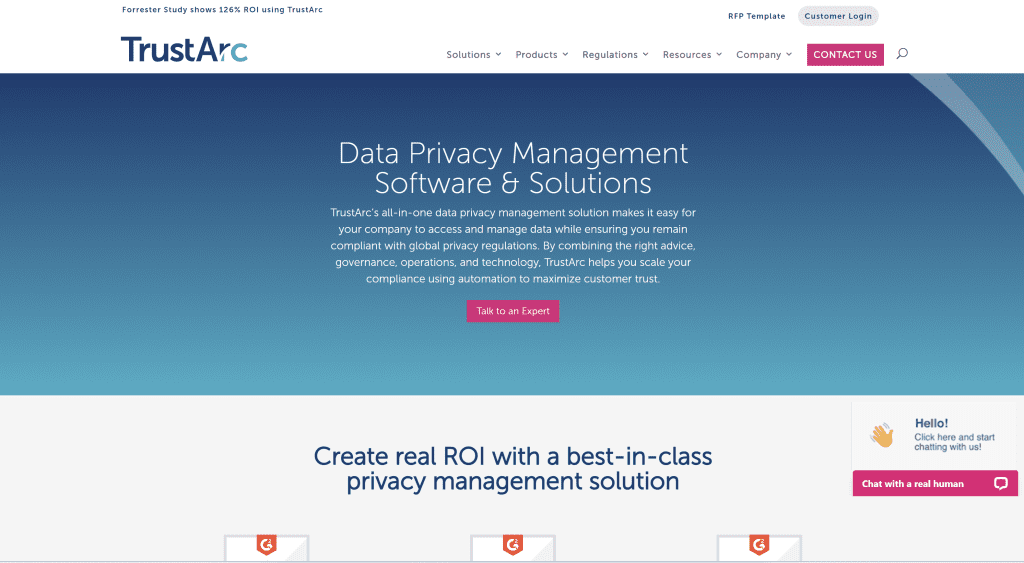
- Key Features:
- Cookie consent management and monitoring.
- Privacy risk assessments.
- Consent analytics and reporting.
- Benefits:
- Facilitates ongoing compliance with evolving cookie regulations.
- Provides insights into user preferences through consent analytics.
- Offers automated solutions for periodic privacy risk assessments.
Privacy Management Platforms
WireWheel
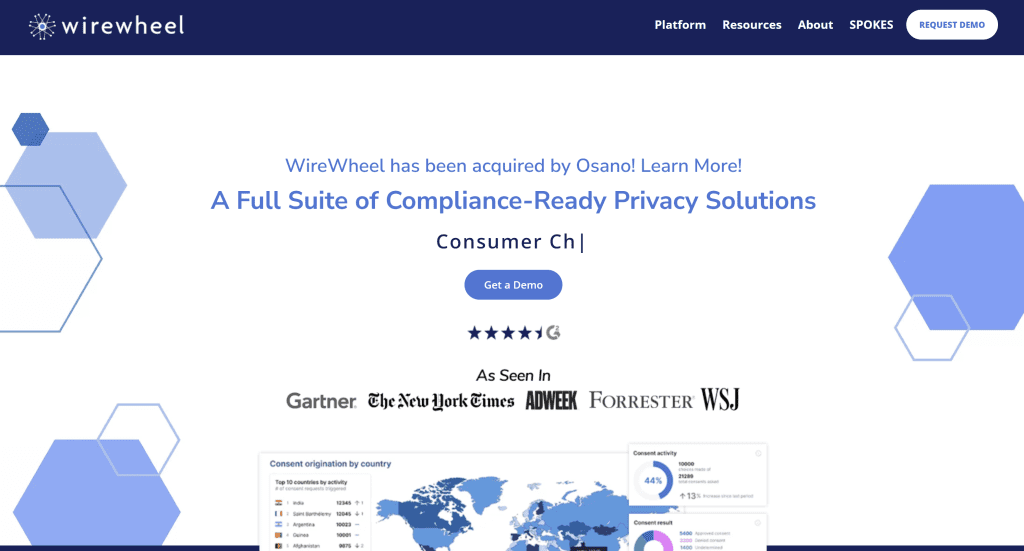
- Key Features:
- Data discovery and mapping.
- Consent management and preference centres.
- Automation of Data Subject Access Requests (DSARs).
- Benefits:
- Enables organizations to visualize and understand their data landscape.
- Centralizes consent management and provides customizable preference centres.
- Automates the response process for DSARs, ensuring timely compliance.
OneTrust Privacy Management Software
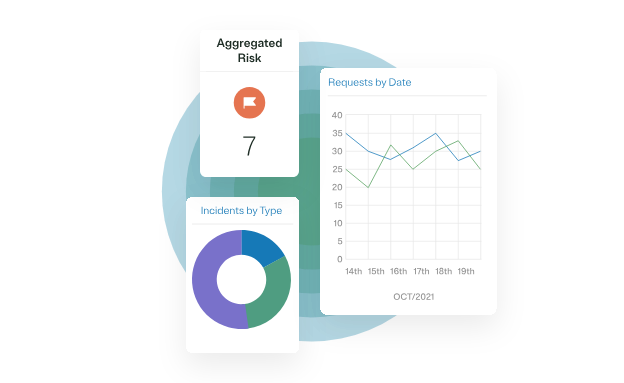
- Key Features:
- Comprehensive privacy management suite.
- Automated compliance assessments.
- Incident and breach response workflows.
- Benefits:
- Offers a holistic approach to privacy management.
- Automates compliance assessments and monitors ongoing adherence.
- Facilitates swift response to data breaches through predefined workflows.
Training and Awareness Resources
GDPR Training by the International Association of Privacy Professionals (IAPP)
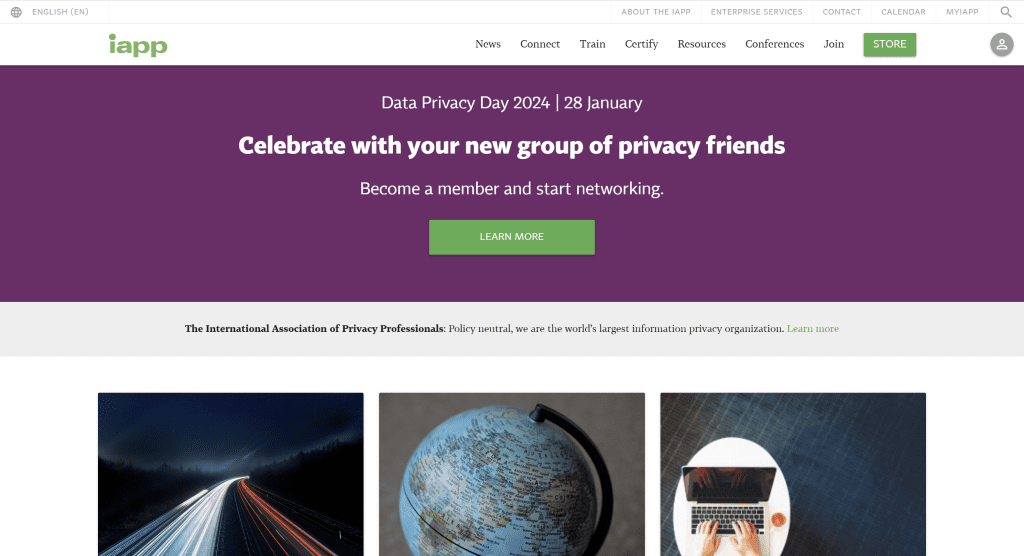
- Key Features:
- Comprehensive GDPR training modules.
- Certification programs for privacy professionals.
- Continuous learning resources.
- Benefits:
- Equips marketing teams with in-depth knowledge of GDPR principles.
- Allows professionals to earn recognized certifications.
- Provides ongoing learning opportunities to stay updated on regulatory changes.
European Data Protection Board (EDPB) Guidelines
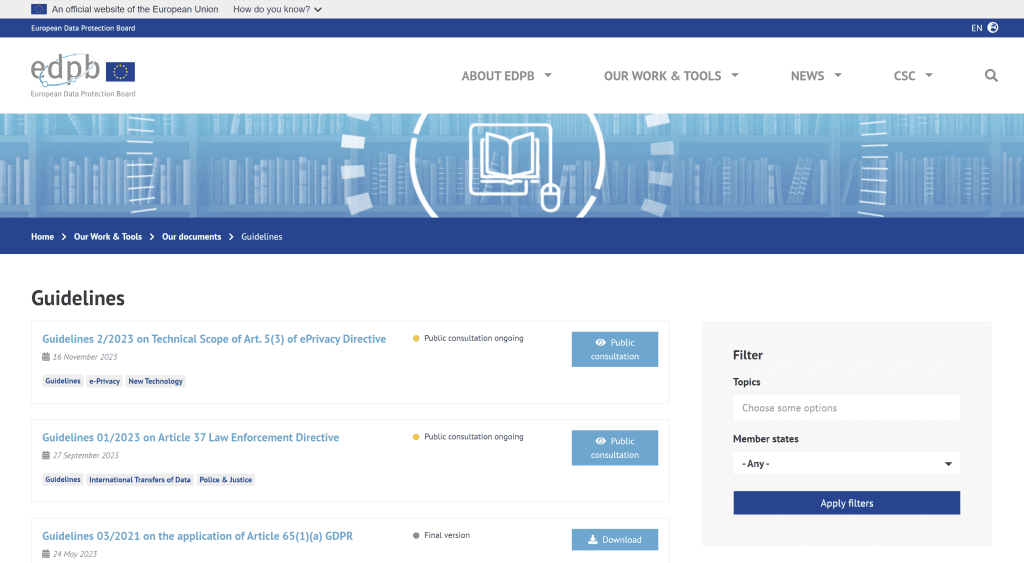
- Key Features:
- Official guidance on GDPR compliance.
- Interpretations of key GDPR provisions.
- Case studies and best practices.
- Benefits:
- Offers authoritative information directly from regulatory authorities.
- Provides practical insights into applying GDPR principles.
- Supports organizations in understanding and interpreting specific GDPR requirements.
Incident Response and Data Breach Tools
Incident Response Platform by D3 Security
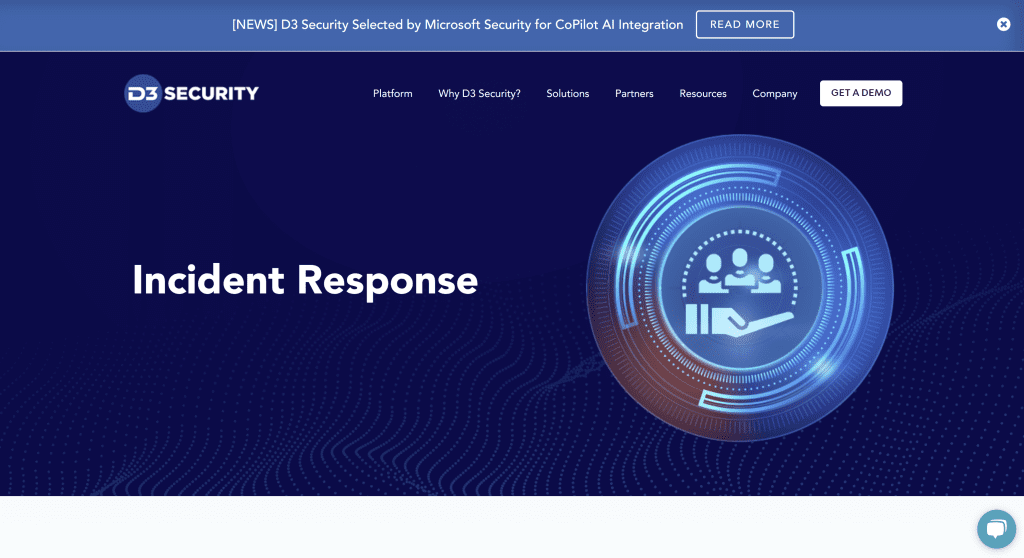
- Key Features:
- Automated incident response workflows.
- Real-time collaboration for incident resolution.
- Post-incident reporting and analysis.
- Benefits:
- Streamlines incident response processes for GDPR-related breaches.
- Enhances collaboration among cross-functional incident response teams.
- Provides post-incident analytics for continuous improvement.
Varonis Data Security Platform
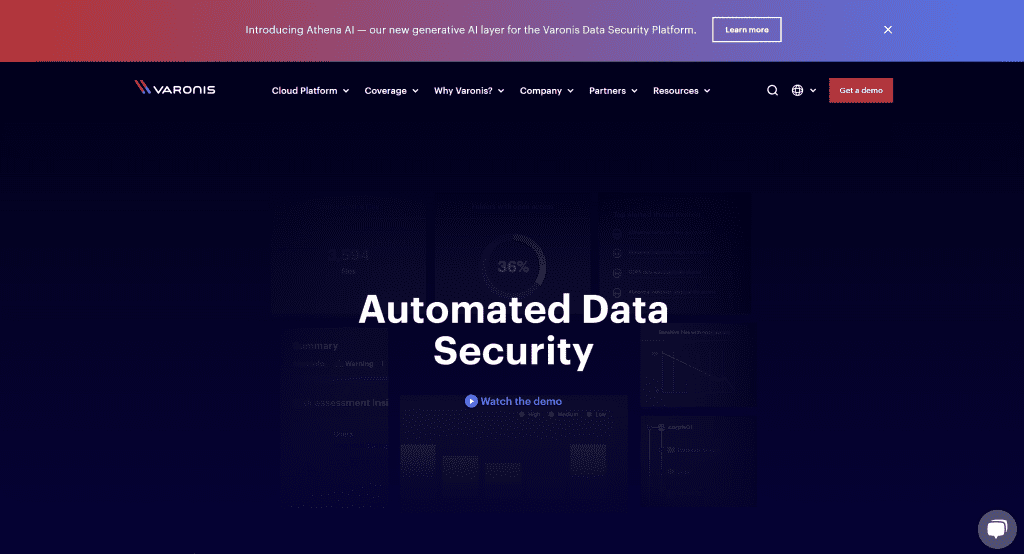
- Key Features:
- Real-time data monitoring and alerting.
- User behaviour analytics for anomaly detection.
- Automated response to security incidents.
- Benefits:
- Monitors data access and detects potential GDPR violations.
- Analyzes user behaviour to identify abnormal patterns.
- Automates responses to security incidents to mitigate risks promptly.
Conclusion
Embracing the Regulatory Horizon
In the ever-evolving landscape of data privacy, the General Data Protection Regulation (GDPR) continues to stand as the sentinel, shaping the marketing strategies of 2024.
The regulatory horizon, far from static, demands constant vigilance and adaptation.
As we bid adieu to this comprehensive guide, it’s essential to recognize that compliance with GDPR is not just a legal obligation but a strategic imperative for marketers navigating the complex waters of data-driven campaigns.
Challenges as Opportunities: A Balancing Act
The challenges posed by GDPR in 2024 are as diverse as the marketing strategies they govern. From the intricacies of international data transfers to the delicate balance between personalization and privacy, marketers face a landscape rich with challenges.
However, within these challenges lie opportunities – opportunities to build trust, transparency, and a profound understanding of consumer expectations.
It’s not merely about avoiding regulatory pitfalls; it’s about seizing the chance to set a new standard for ethical, data-centric marketing.
Tools and Resources: Equipping Marketers for Success
In this guide, we’ve explored an array of tools and resources designed to fortify marketers in their GDPR compliance journey.
This arsenal empowers marketers to not only meet regulatory standards but to streamline processes, enhance transparency, and build a resilient data protection infrastructure.
A Culture of Continuous Learning
GDPR compliance is not a destination; it’s a journey marked by continuous learning and adaptation. The realm of privacy is dynamic, with regulatory nuances evolving over time.
The International Association of Privacy Professionals (IAPP) and official guidelines from the European Data Protection Board (EDPB) serve as invaluable resources, fostering a culture of ongoing education.
Marketers must not only keep pace with regulatory changes but also proactively seek opportunities to deepen their understanding of data protection principles.
Strategies for Success in the GDPR Era
As we navigate the intricacies of GDPR in 2024 and beyond, success hinges on strategic approaches that go beyond mere compliance checkboxes.
Proactive data management, transparent consent mechanisms, ethical AI practices, and robust incident response readiness are the cornerstones of a successful GDPR compliance strategy.
Marketers must weave these elements into the fabric of their campaigns, fostering a privacy-centric approach that not only meets regulatory requirements but also resonates with today’s conscientious consumers.
Looking Ahead: A Privacy-Centric Future for Marketing
As we peer into the future, it’s evident that the trajectory of marketing is intertwined with privacy considerations. The discerning consumer of today seeks not only products or services but also assurance that their data is handled responsibly.
Successful marketers will be those who embrace this shift, recognizing that a privacy-centric approach is not just a regulatory requirement but a strategic imperative for sustained success.
The journey into the GDPR era is an opportunity to build trust, foster transparency, and craft marketing experiences that resonate with an audience increasingly attuned to data privacy.
If you are looking for a top-class digital marketer, then book a free consultation slot here.
If you find this article useful, why not share it with your friends and business partners, and also leave a nice comment below?
We, at the AppLabx Research Team, strive to bring the latest and most meaningful data, guides, and statistics to your doorstep.
To get access to top-quality guides, click over to the AppLabx Blog.
People also ask
What is the GDPR legislation for marketing?
The GDPR (General Data Protection Regulation) legislation for marketing mandates transparent data processing, explicit user consent, and protection of individuals’ privacy rights. Marketers must align practices with GDPR principles, ensuring responsible data handling and providing users control over their information.
What is the GDPR for marketing agencies?
GDPR for marketing agencies necessitates transparent data practices, explicit consent mechanisms, and comprehensive client education. Agencies must prioritize data protection, implement privacy by design, and regularly audit processes to ensure compliance, fostering trust in client relationships.
Does GDPR apply to direct marketing?
Yes, GDPR applies to direct marketing. Marketers must obtain explicit consent, provide transparent information, and offer opt-out mechanisms. Individuals have the right to control their data usage, making compliance essential for ethical and lawful direct marketing practices.


























